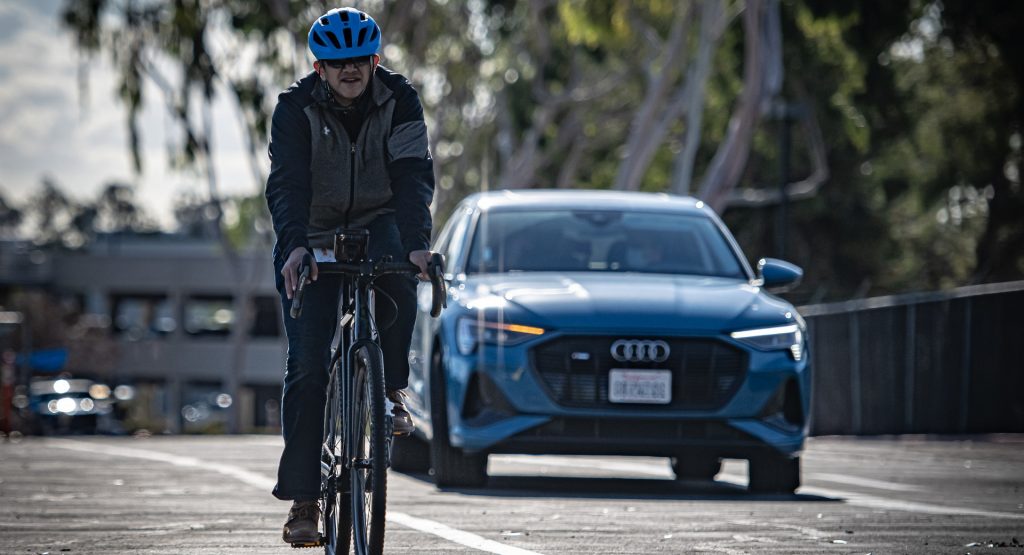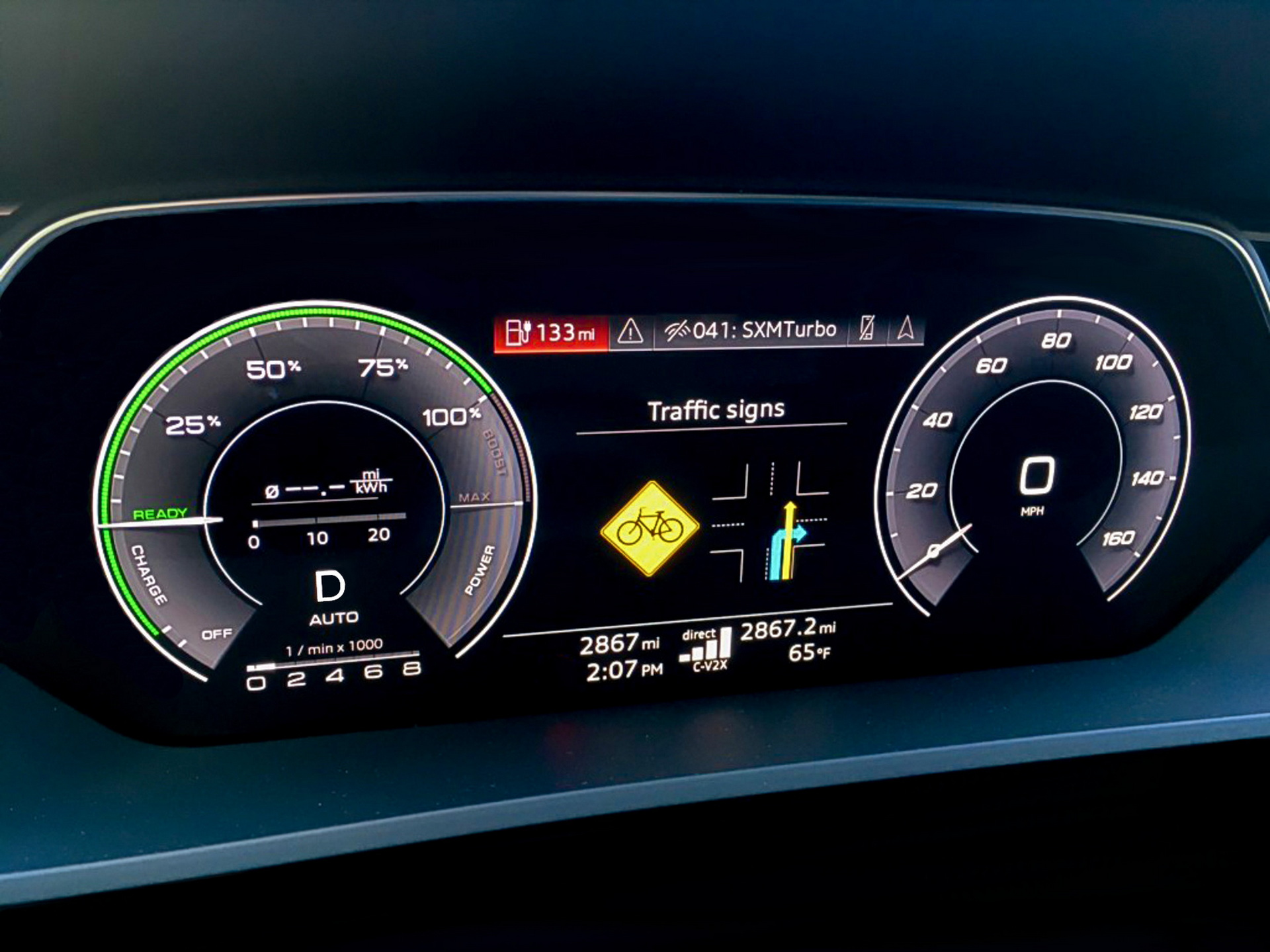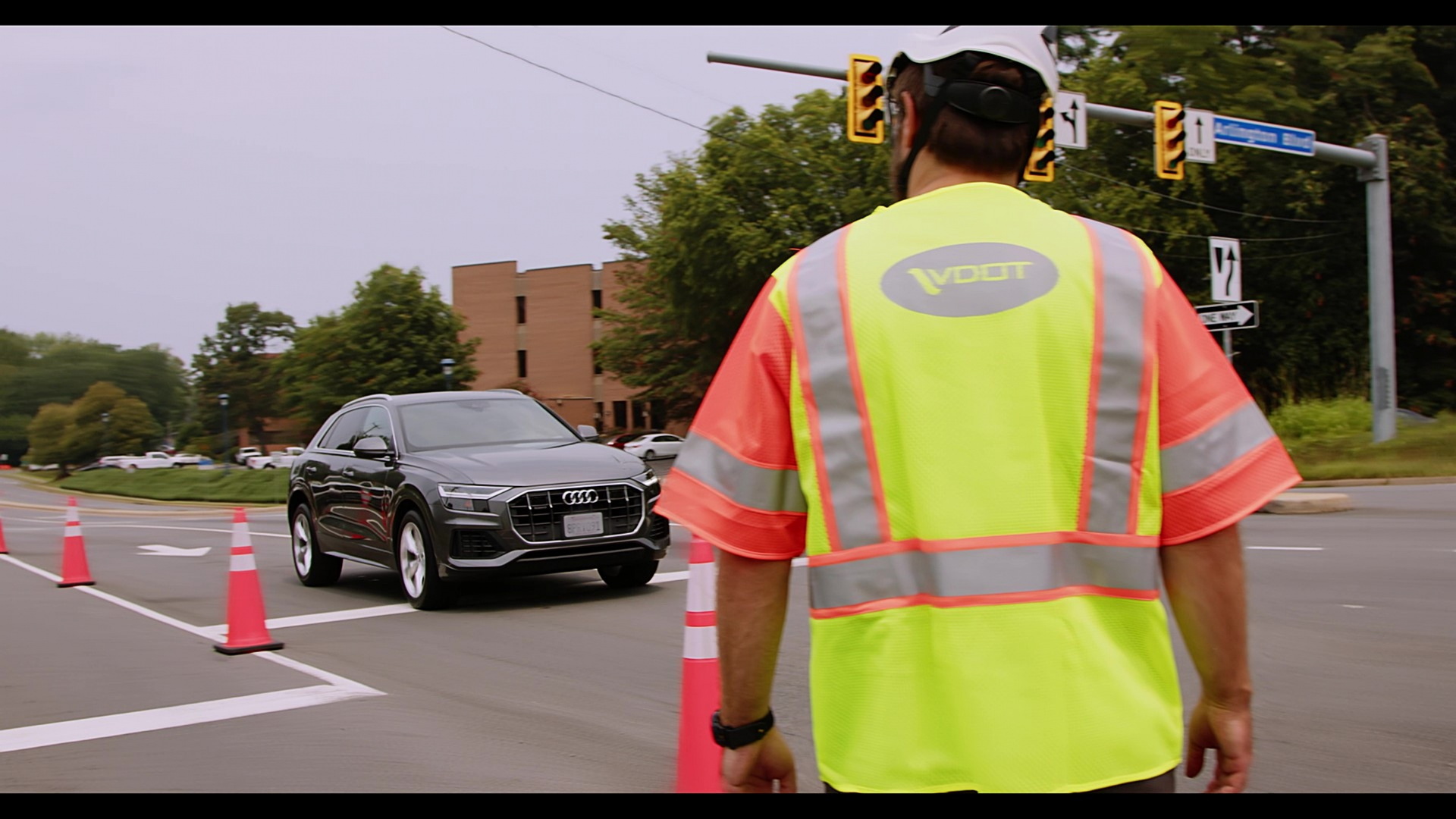Audi of America announced that it is working with Qualcomm Technologies and Spoke to use cellular vehicle-to-everything (C-V2X) technology in order to make the road safer for cyclists.
The automaker is developing the hardware and software in an e-tron Sportback test vehicle that will use both LTE signals from nearby cell towers and direct vehicle-to-bicycle communications that rely on short-range signals for identifying a bicycle on the road, that can’t be otherwise seen by a driver. The technology will link up to a connected suite of technologies developed by Spoke, a mobility platform for cyclist safety and connectivity.
Spoke Safety’s suite of hardware and software is designed to be the industry’s first reliable connected system to offer cyclists secure, direct communication for contextual awareness and alerts and share it with drivers.
Read Also: Audi Will Be Among First Automakers To Introduce 5G In Its American Lineup
The technology comes at a particularly relevant moment as Congress approved a two-year research study led by the National Highway Traffic Safety Administration (NHTSA) and the Federal Highway Administration to “expand vehicle-to-pedestrian research efforts focused on incorporating bicyclists and other vulnerable road users into the safe deployment of connected vehicle systems.”
According to its most recent data, NHTSA reported that there were 846 bicycle fatalities from motor-vehicle-related accidents in 2019. That amounts to a 36 percent increase over 2010 while on-road cycling injuries increased to 49,000 in the U.S. in 2019. Indeed, the National Roadway Safety Strategy, released by the Department of Transportation in 2022, found that “fatalities among pedestrians and bicyclists have been increasing faster than roadway fatalities overall in the past decade.”
Audi, meanwhile, has been working on advancing C-V2X technology in America since 2020. The automaker partnered with the Virginia Department of Transportation to use the technology to inform vehicles approaching a construction about speed limits and to alert workers when vehicles were approaching using a connected safety vest.






